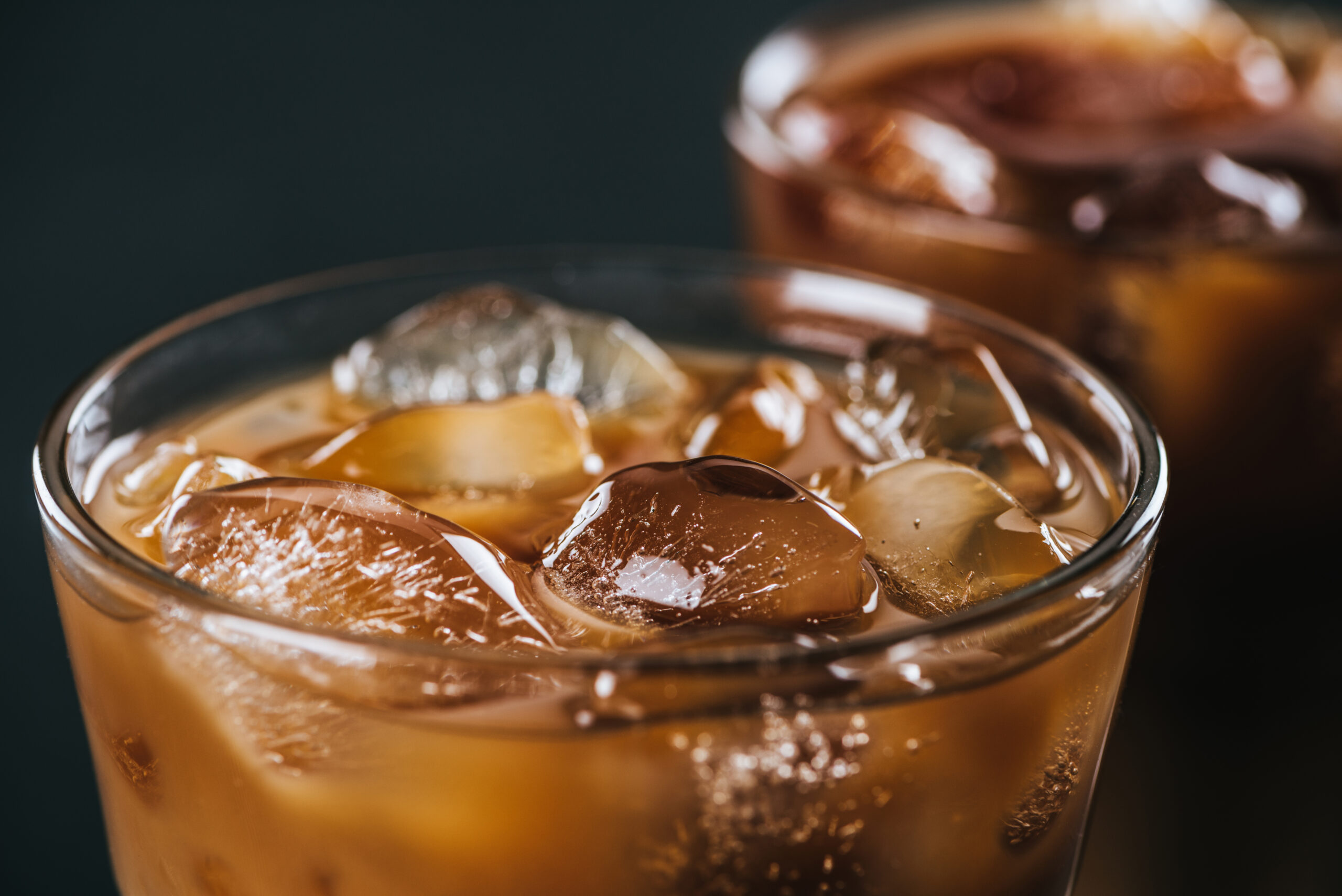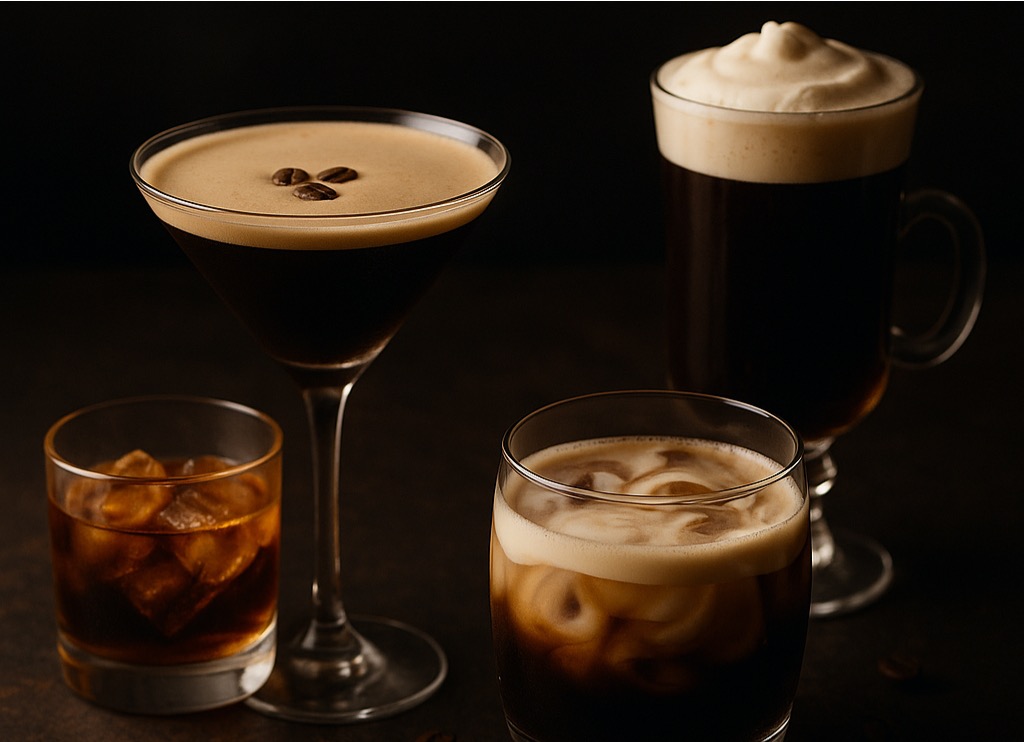
How to Make Cold Brew Coffee at Home
Cold brew is one of the simplest and most forgiving brewing methods, so it’s easy to learn how to make cold brew coffee at home!
While there are lots of options for cold brew equipment, we recommend a dedicated cold brew pitcher for the best results.
Brewing with cool water extracts less of the acids and bitter compounds from the coffee beans, resulting in a smoother, naturally sweeter cup.
For many coffee enthusiasts, summer conjures images of refreshing iced lattes or cold brew enjoyed on a sunny patio. But cold brew isn’t just a seasonal drink—it’s a brewing method with a unique flavor profile that deserves a year-round place in your coffee repertoire. And while cold brew at your local café is a true indulgence, cold brewing is one of the simplest and most forgiving brewing methods, so you can easily replicate that smooth rich flavor by making cold brew at home.
The beauty of cold brew goes beyond its refreshing temperature. Brewing with cool water extracts the mellow, smooth compounds in the beans and leaves some of the acids and bitter compounds behind. That means cold brew tends to highlight the smooth, rich flavors of your favorite roasts. In fact, coffee veteran Dale Schotte, CEO and founder of Park Avenue Coffee, told us that he’s “obsessed” with their cold brew with a splash of whole milk, because it brings out the chocolatey notes of their roasts—and tastes like a grown-up version of chocolate milk! Cold brew is also incredibly convenient—you can brew up large batches, and it’s a great grab-and-go option for busy mornings. It’s also one of the most eco-friendly brewing methods.
So get ready to experience the smooth, naturally sweet taste of coffee brewed slow and cold, right from home. We’re here to help show you how to make cold brew coffee at home!
What’s the Best Way to Make Cold Brew at Home?
While there are several methods for at-home cold brewing—like using a French press or a steep-and-filter method with a mason jar—if you’re a true cold brew fan, we highly recommend a cold brew pitcher. A dedicated brewing pitcher has several advantages:
- All-in-one Design: Cold brew pitchers are designed to allow you to brew and store your coffee in the same container, which means less clean-up and fewer moving parts in the process.
- Optimized Filter: Cold brew pitchers have filters specifically designed to allow the flavorful compounds from the grounds to be released into the water while keeping the grounds out of your final brew.
- Mess-Free Agitation: A high-quality cold brew pitcher will seal tightly to allow you to agitate your grinds, to enhance extraction, by shaking and swirling the pitcher during the brewing process, without making a mess.
Our hands-down favorite cold brew pitcher is Takeya’s Cold Brew Coffee Maker. It’s made of BPA-free, shatter resistant materials, has a built-in fine-mesh filter, and is dishwasher safe. Plus, its lid is so airtight that you can store it on its side without losing a drop! This simplifies the brewing process and ensures a clean, fresh-tasting cold brew every time.
In fact, one of our team members retired her old cold brew pitcher the first time she tested the Takeya!
Essential Equipment for Cold Brew at Home
The beauty of cold brew lies in its simplicity. Here’s what you’ll need:
- Coffee: You can use whole beans or pre-ground coffee, but keep in mind that most ground coffees you’ll find at the grocery store will be ground too fine for cold brew, which can lead to a silty finished product. Since cold brew is less acidic than hot coffee, roasts with naturally sweeter flavor profiles, like medium roasts or dark roasts, tend to work especially well.
- Scale: A digital scale will be key for making sure that you’ve got exactly the right ratio of coffee to water. We love our Hario Coffee Scale because it’s super precise and user-friendly.
- Coffee Grinder: Hand grinders and blade grinders will both work, but Burr grinders like our Opus Conical Burr Grinder will give you the most control and create the most consistent results.
Cold Brew Pitcher: While other options, like brewing in a French press or a mason jar, can work, a dedicated cold brew pitcher simplifies the process and ensures a clean, fresh-tasting result.
How to Make Cold Brew Coffee
Now that you’ve assembled your cold brew arsenal, let’s get brewing! Here’s a specific guide for using a cold brew pitcher:
Step 1: Choose Your Ratio
Cold brewing is incredibly simple and forgiving, but getting the right ratio can make or break your final cup. Unlike many other brewing methods, cold brew is designed to produce a concentrate that you’ll add water or milk to before you drink it. That means the ratio of coffee to water is smaller than most other brewing methods.
Here at U3, we’ve found that a good rule of thumb for cold brew in the Takeya pitcher is a 1:10 ratio of coffee grounds to water. That means for every 1 gram of coffee, you’ll need 10 grams of water.
It helps to start the process knowing how many grams of water your pitcher holds. Take off the lid and remove the filter basket, then put your pitcher on your scale. Make sure your scale is set to grams and tare the scale—in other words zero it out so that you’re only measuring the weight of the water you add. Then, using another carafe or kettle, fill your cold brew pitcher, leaving about a half an inch of space at the top (to account for the space you’ll need when you add the filled filter). Make note of the weight in grams because this will help you determine how many grams of coffee you need in the next step.
Step 2: Measure and Grind
Whether you choose ground coffee or whole bean coffee, use your scale to weigh out the right amount of coffee based on the size of your pitcher and the 1:10 ratio. Our favorite scale is the Hario Coffee Scale because it’s super precise and user friendly.
If you’re grinding the beans yourself, aim for a coarse grind—look for a texture similar to sea salt. This will prevent overextraction and leave you with a cleaner finished product. We love the Opus Conical Burr Grinder because it creates an ideal uniform grind, which will help you achieve ideal extraction and ensure there aren’t small fines that will escape through the mesh filter and muddy up your brew.
If you’re looking for pre-ground coffee to make the process simpler, though, we’ve got you covered! When you order ground coffee in the U3 Coffee Exchange, we let you choose your preferred brewing method; then we send you grounds that are optimized for you!
Step 3: Fill the Filter
Add ground coffee to your filter basket using a tablespoon to avoid spilling your perfectly measured grounds and making a mess. One other thing to keep in mind here—while it might be tempting to try to maximize the size of your filter, don’t overfill it. The water in your pitcher can only extract from the grounds it can reach, and filling your filter above the mesh will leave you with dry grounds at the top that never have a chance to extract.
Step 4: Add Water
Fill your pitcher with room-temperature water—that’s right, we’re telling you not to use cold water in your cold brew. What gives? We like brewing on the countertop rather than the fridge—because cold water slows the brewing process—so starting with ice cold water isn’t necessary. Be sure to leave about a half an inch of space at the top of the pitcher to account for the volume of the filled filter basket; otherwise you’re likely to end up with a wet mess in the next step.
Step 5: Replace the Filter Basket and Lid
Check to make sure that you don’t have any coffee grounds stuck to the outside of your filter—we don’t want those to end up in your finished concentrate. Then submerge the filled filter basket in the pitcher and gently twist the lid to secure it. Give the pitcher several gentle swirls to help saturate all the coffee grounds.
Step 6: Brew
Allow your coffee to steep for 12 to 24 hours. The longer the steeping time, the stronger and bolder your cold brew will be. Take into account where you’ll be storing your pitcher while it’s brewing. Cold water will extract more slowly, so if you opt to steep in the fridge, you’ll probably end up on the higher end of the range. We recommend steeping at room temperature on the countertop, which will usually put you on lower end of the range. Either way, keep in mind that past 24 hours, nothing more will extract from your grounds, no there’s no benefit in letting them steep beyond this point, and it could leave you with grittiness in your concentrate.
A few times throughout the steeping process, give your pitcher a several gentle swirls. This will help ensure that all of the grounds stay saturated and that you’re getting an even extraction.
Step 7: Remove the Filter
Once your cold brew has finished steeping, remove the filter basket and put your pitcher in the fridge—but don’t discard the grounds yet! Here’s a tip we picked up from our friends at Takeya:
The grounds in your filter will be dripping wet, so carefully transfer it to a tall glass or large mug so that it’s standing upright. Give the remaining liquid an hour or so to drain out of the filter, then add this extra-flavorful concentrate to your pitcher before you compost your grounds. Your cold brew coffee can be stored in the refrigerator for up to two weeks.
Step 8: Serve and Enjoy!
Serve your cold brew over ice, and remember that, because it’s a concentrate, you’ll likely want to dilute it a bit with water, milk, or a milk substitute. While many coffee lovers recommend a 1:1 ratio in your finished cup, we encourage you to explore and see what makes your tastebuds happiest!
Troubleshooting Cold Brew at Home
Even the most seasoned coffee enthusiasts can encounter hiccups. Here are some common cold brew challenges and solutions:
- Bitter Cold Brew: Did your cold brew turn out overly bitter? This might be due to overextraction. Try shortening the steeping time. It might also come down to how well your roast aligns with your personal taste, so experimenting with different roast levels and origins might be what you need!
- Watery or Sour Cold Brew: If your cold brew lacks flavor, it could be due to under-extraction. Try steeping for a longer period or experiment with a darker roast or a different origin for a different flavor profile.
Grittiness: If you find that you’ve got a gritty mouthfeel to your finished product, try grinding a bit coarser to ensure that your grounds can’t escape the filter. It’s also a good idea to make sure that the outside of your filter is free from rogue grounds before you submerge it. And make sure you’re thoroughly cleaning your pitcher after each use since grounds can sometimes find their way into the corners and threads of your pitcher—and then end up in your finished cold brew.
Conclusion
Cold brew is also incredibly versatile. Enjoy it black, on ice with a splash of milk, or experiment with flavorings like vanilla extract, chocolate syrup, or homemade simple syrup. And the best part? Cold brew concentrate keeps beautifully in your fridge, allowing you to whip up a delicious drink in seconds—perfect for busy mornings or those long, hot summer days.
Cold brew offers a unique taste experience compared to traditional hot coffee. Brewing with cool water extracts less acidity from the coffee beans, resulting in a smoother, naturally sweeter cup.
There you have it, everything you need to know about how to make cold brew coffee! Cheers to you for diving deep into the world of coffee with us! U3 Coffee exists to create the most meaningful coffee experience for millions of mindful, motivated humans like you. Let’s learn, empower, and celebrate the journey from bean to cup. Because here, we’re United by Coffee.
Related posts
- Apr 2025 Elevate your coffee-based cocktails! Discover new takes on the espresso martini, Irish coffee, & more classic coffee drinks.
- Feb 2025 Discover the top coffee trends for 2025, from cold coffee innovations to mindful coffee drinking. Explore the latest and future coffee trends in the coffee industry.


